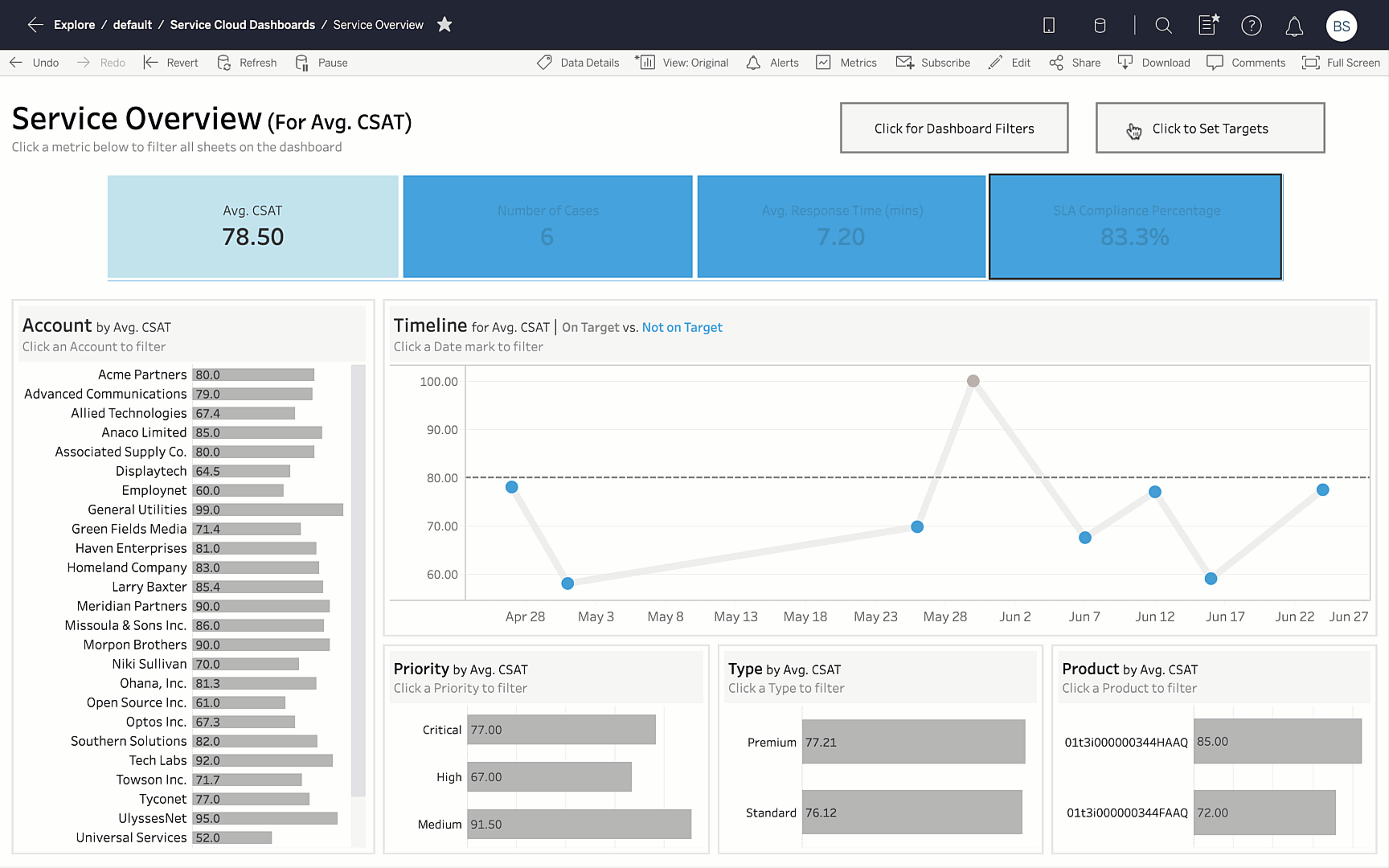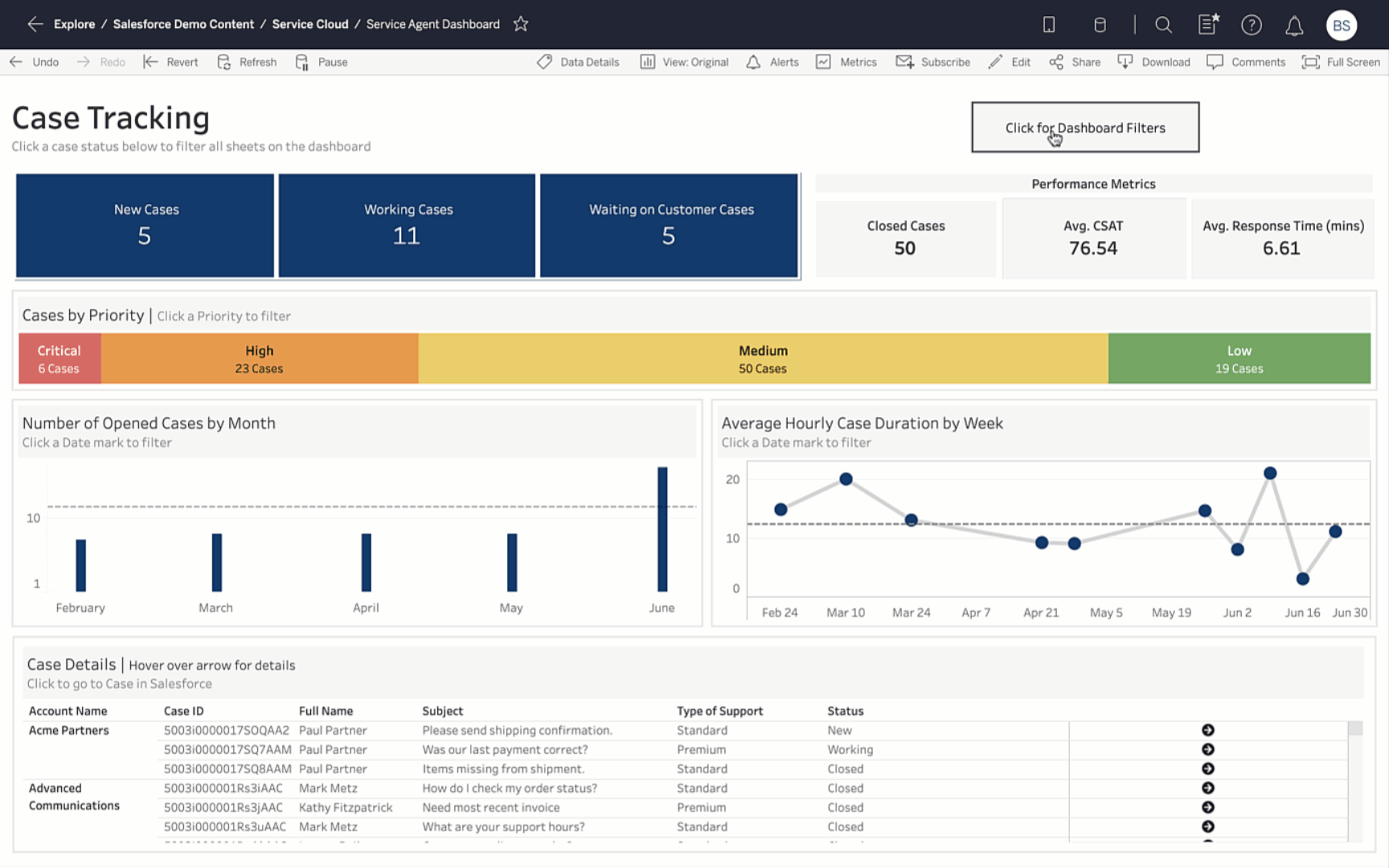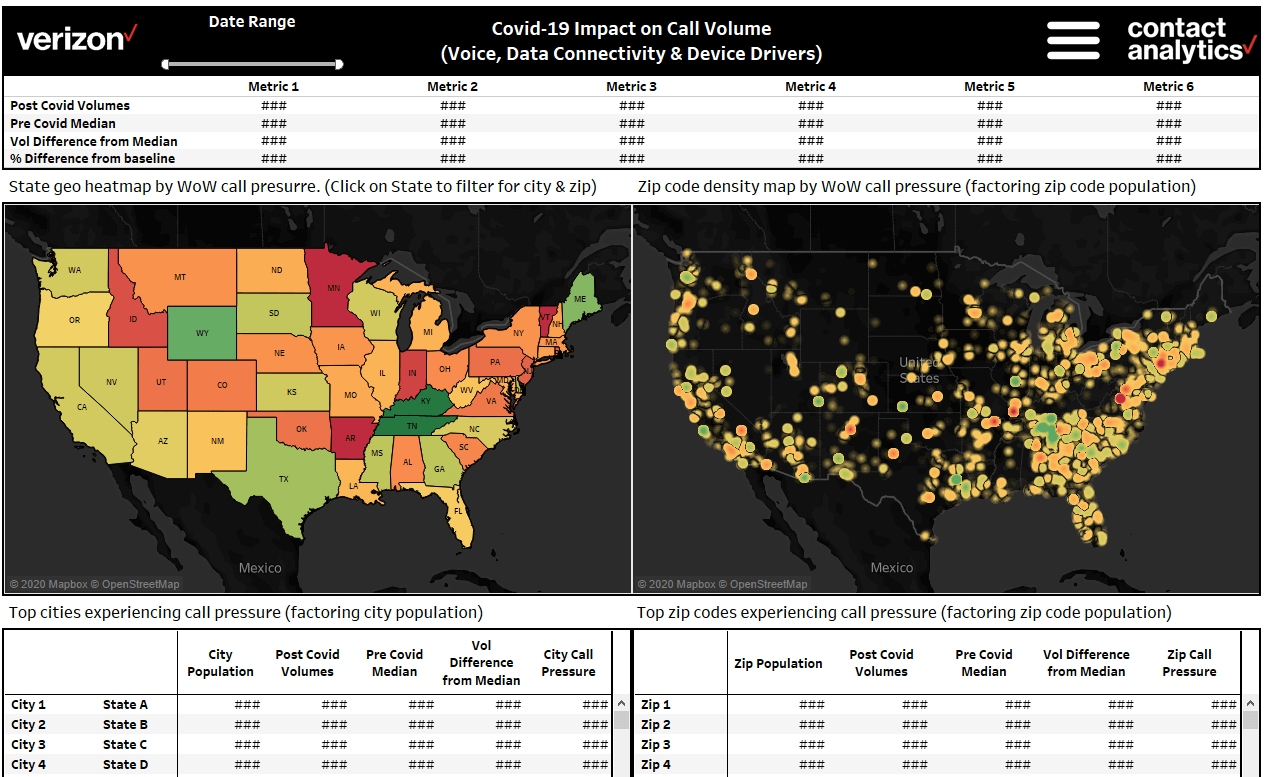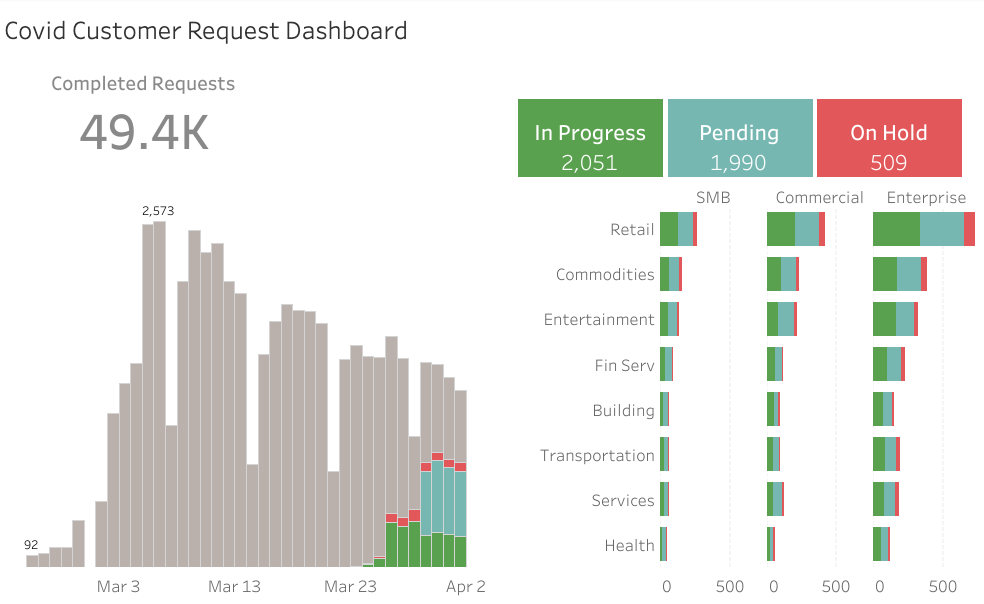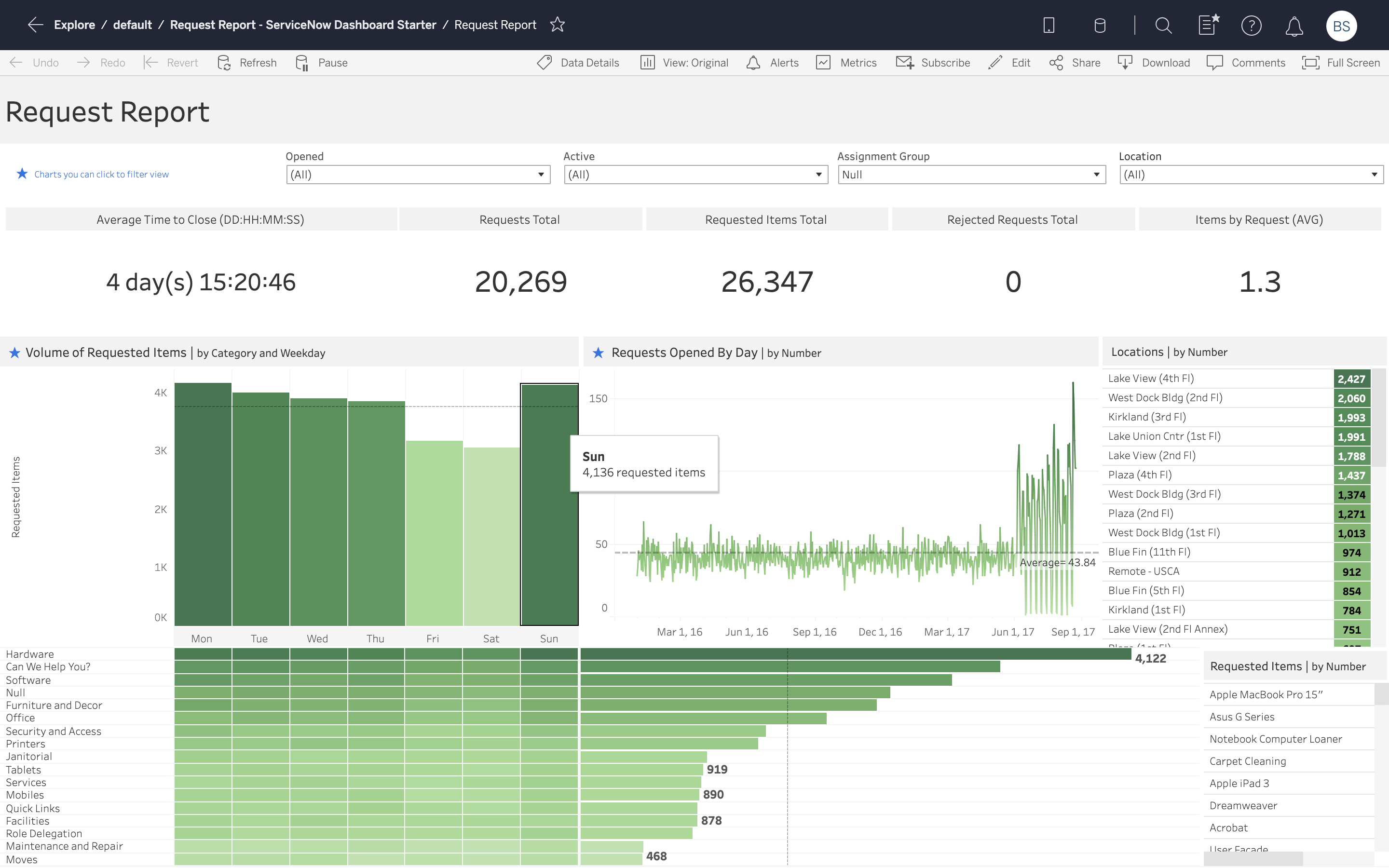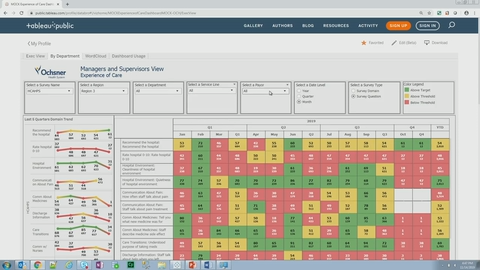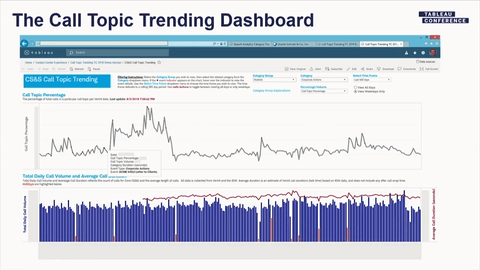The world's leading businesses use data to optimize customer experiences, improve customer satisfaction, and earn customer loyalty. Analytics give them the deep visibility into their customers and the understanding of service operations they need to deliver best-in-class customer support. Learn how Tableau can turn data into your service and support team's super power.
Support and Service Analytics

Jump start analysis with Tableau Accelerators
Get expert-built dashboards to address support and service specific business needs with Accelerators on the Tableau Exchange.
Whitepaper: Four Strategies to Transform Customer Service With Analytics
Yesterday’s customer support organizations needed leaders capable of motivating their call center teams while driving efficient operations. Today’s customer support organizations leaders must deliver on that same goal, but also create a differentiated customer experience. Learn four proven strategies customer service leaders are using to transform their organizations with analytics.
Read the interactive whitepaperVerizon reduces support calls, improves customer experience
Verizon Fios, the provider of broadband Internet, landline voice, and cable TV, used Tableau to:
- Cut customer service analysis time by 50% across call center, digital and dispatch teams
- Reduce call volume by 43% and tech dispatches by 62% for certain cohorts of customers
- Create 1,500+ dashboards ingesting billions of rows of data from Hadoop, Teradata and Oracle
